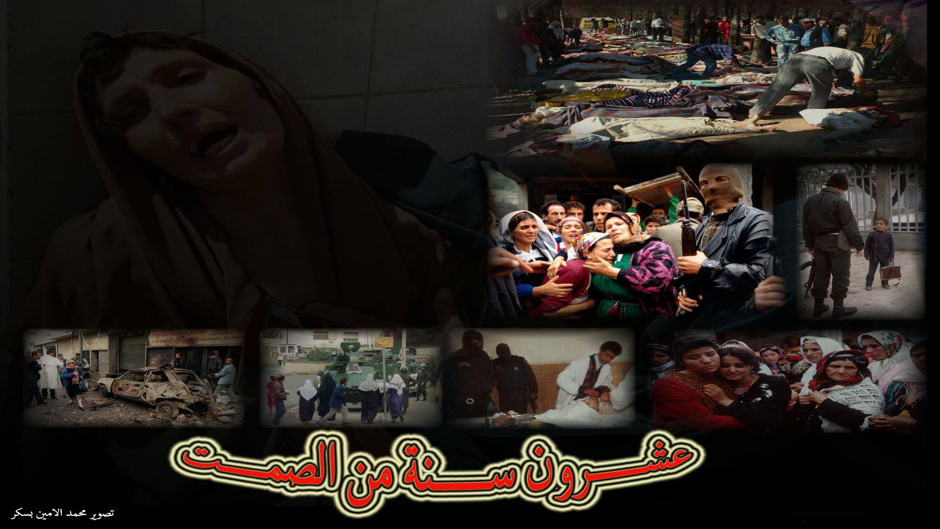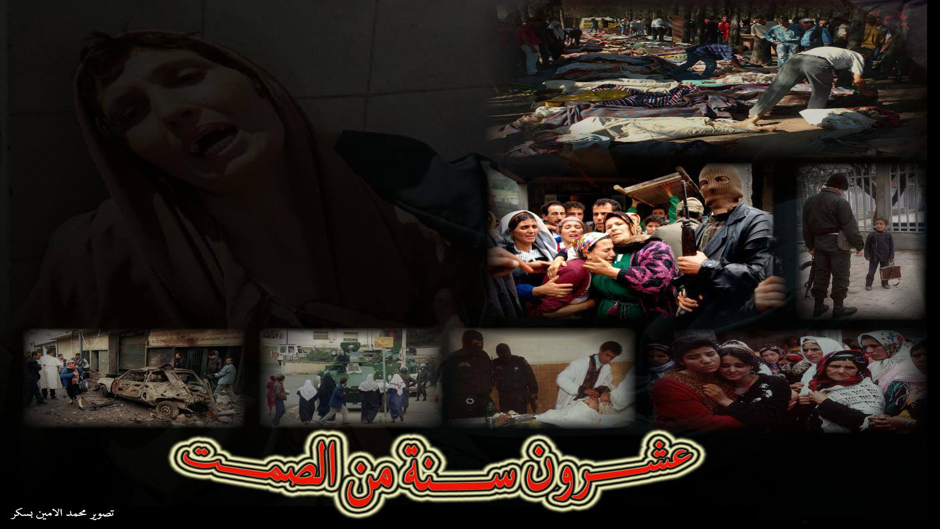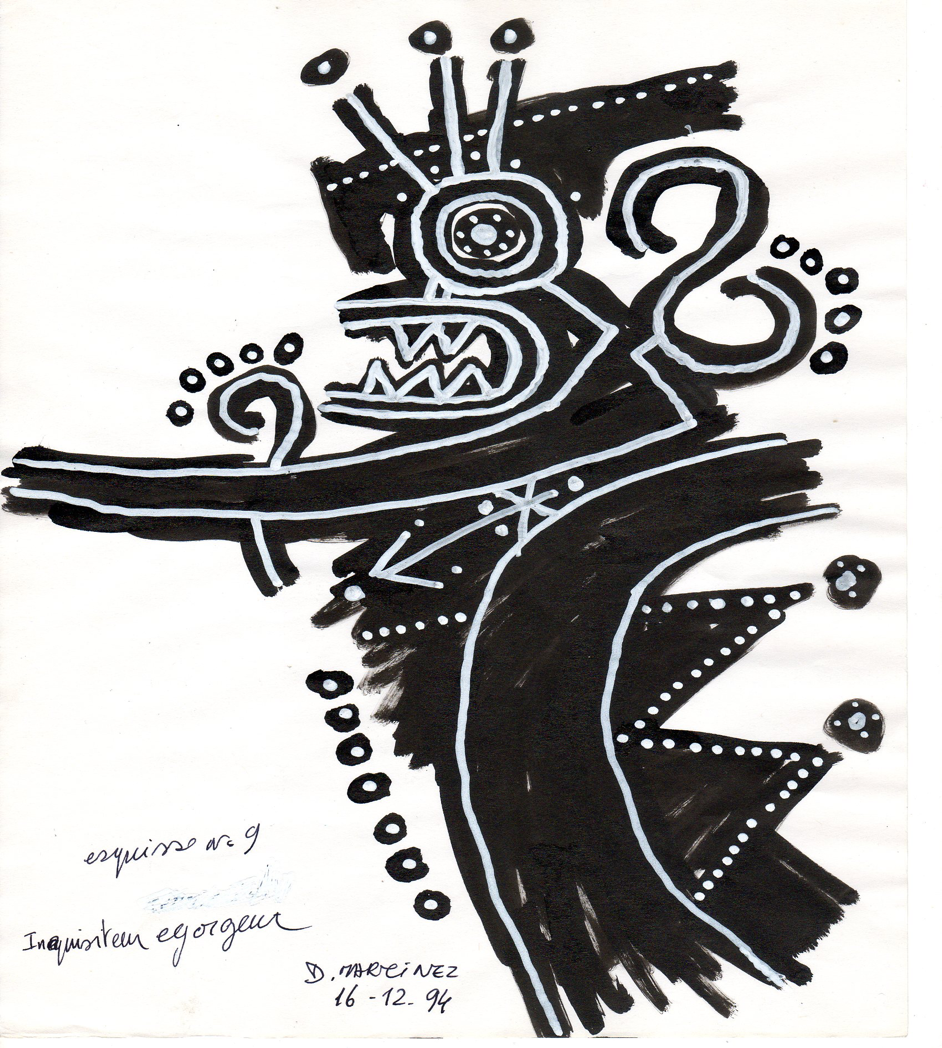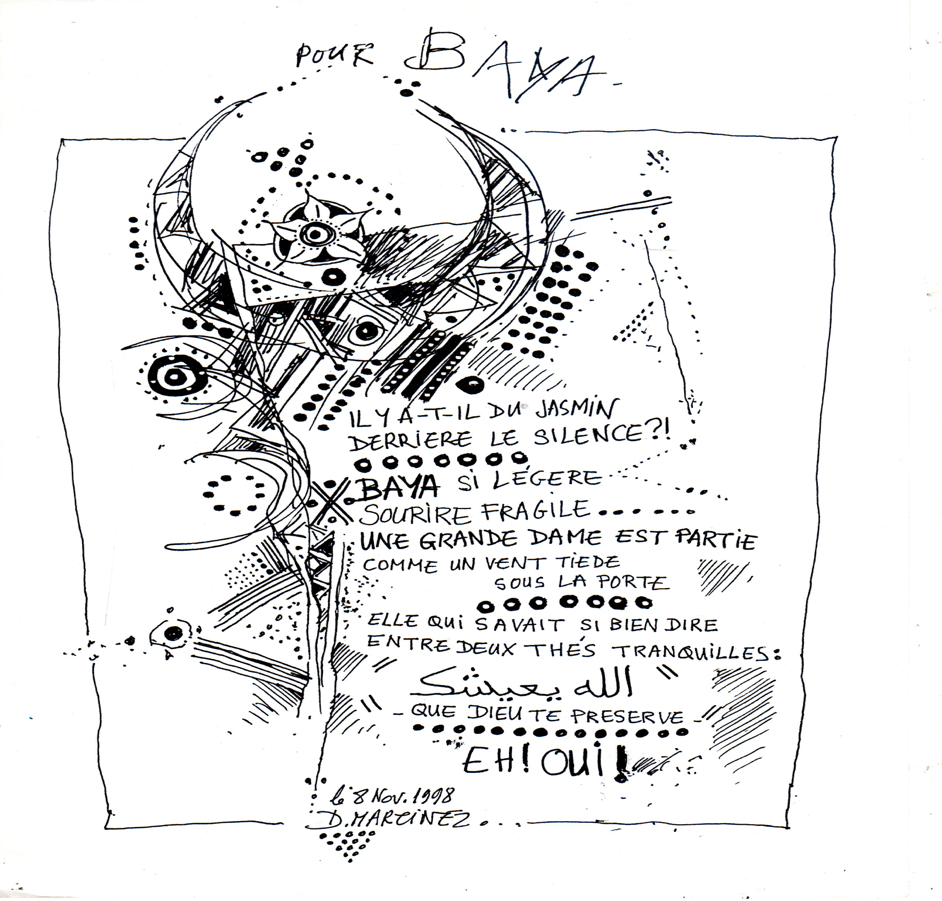Joseph Erb, Joanna Hearne, and Mark Palmer with Durbin Feeling [*]
The intersection of digital studies and Indigenous studies encompasses both the history of Indigenous representation on various screens, and the broader rhetorics of Indigeneity, Indigenous practices, and Indigenous activism in relation to digital technologies in general. Yet the surge of critical work in digital technology and new media studies has rarely acknowledged the centrality of Indigeneity to our understanding of systems such as mobile technologies, major programs such as Geographic Information Systems (GIS), digital aesthetic forms such as animation, or structural and infrastructural elements of hardware, circuitry, and code. This essay on digital Indigenous studies reflects on the social, historical, and cultural mediations involved in Indigenous production and uses of digital media by exploring moments in the integration of the Cherokee syllabary onto digital platforms. We focus on negotiations between the Cherokee Nation’s goal to extend their language and writing system, on the one hand, and the systems of standardization upon which digital technologies depend, such as Unicode, on the other. The Cherokee syllabary is currently one of the most widely available North American Indigenous language writing systems on digital devices. As the language has become increasingly endangered, the Cherokee Nation’s revitalization efforts have expanded to include the embedding of the Cherokee syllabary in the Windows Operating System, Google search engine, Gmail, Wikipedia, Android, iPhone and Facebook.
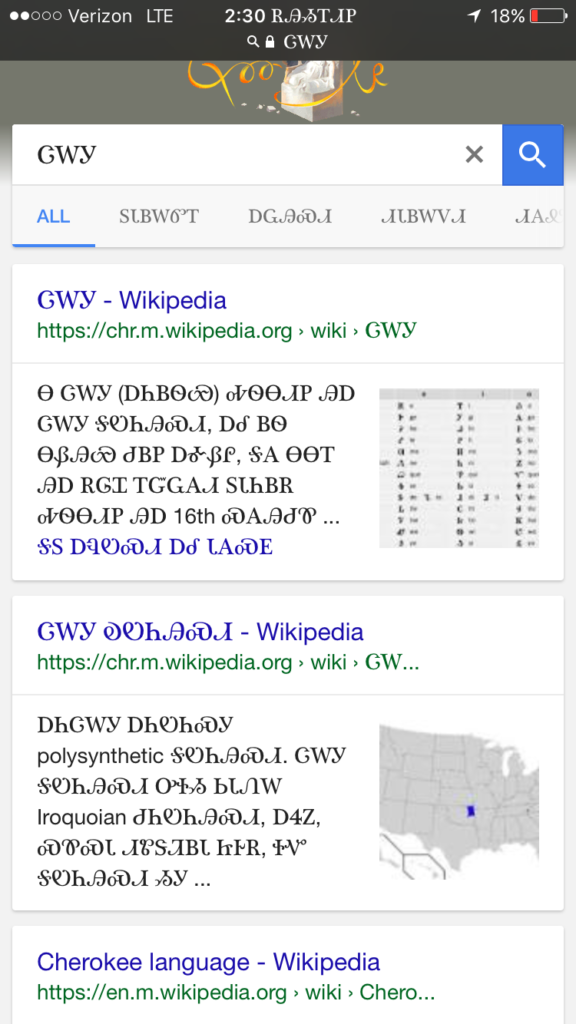
With the successful integration of the syllabary onto multiple platforms, the digital practices of Cherokees suggest the advantages and limitations of digital technology for Indigenous cultural and political survivance (Vizenor 2000).
Our collaboration has resulted in a multi-voiced analysis across several essay sections. Hearne describes the ways that engaging with specific problems and solutions around “glitches” at the intersection of Indigenous and technological protocols opens up issues in the larger digital turn in Indigenous studies. Joseph Erb (Cherokee) narrates critical moments in the adoption of the Cherokee syllabary onto digital devices, drawn from his experience leading this effort at the Cherokee Nation language technology department. Connecting our conceptual work with community history, we include excerpts from an interview with Cherokee linguist Durbin Feeling—author of the Cherokee-English Dictionary and Erb’s close collaborator—about the history, challenges, and possibilities of Cherokee language technology use and experience. In the final section, Mark Palmer (Kiowa) presents an “indigital” framework to describe a range of possibilities in the amalgamations of Indigenous and technological knowledge systems (2009, 2012). Fragmentary, contradictory, and full of uncertainties, indigital constructs are hybrid and fundamentally reciprocal in orientation, both ubiquitous and at the same time very distant from the reality of Indigenous groups encountering the digital divide.
Native to the Device
Indigenous people have always been engaged with technological change. Indigenous metaphors for digital and networked space—such as the web, the rhizome, and the river—describe longstanding practices of mnemonic retrieval and communicative innovation using sign systems and nonlinear design (Hearne 2017). Jason Lewis describes the “networked territory” and “shared space” of digital media as something that has “always existed for Aboriginal people as the repository of our collected and shared memory. That hardware technology has made it accessible through a tactile regime in no way diminishes its power as a spiritual, cosmological, and mythical ‘realm’” (175). Cherokee scholar (and former programmer) Brian Hudson includes Sequoyah in a genealogy of Indigenous futurism as a representative of “Cherokee cyberpunk.” While retaining these scholars’ understanding of the technological sophistication and adaptability of Indigenous peoples historically and in the present, taking up a heuristic that recognizes the problems and disjunction between Indigenous knowledge and digital development also enables us to understand the challenges faced by communities encountering unequal access to computational infrastructures such as broadband, hardware, and software design. Tracing encounters between the medium specificity of digital devices and the specificity of Indigenous epistemologies returns us to the incommensurate purposes of the digital as both a tool for Indigenous revitalization and as a sociopolitical framework that makes users do things according to a generic pattern.
The case of the localization of Cherokee on digital devices offers insights into the paradox around the idea of the “digital turn” explored in this b2o: An Online Journal special issue—that on the one hand, the digital turn “suggests that the objects of our world are becoming better versions of themselves. On the other hand, it suggests that these objects are being transformed so completely that they are no longer the things they were to begin with.” While the former assertion is reflected in the techno-positive orientation of much news coverage of the Cherokee adoption on the iPhone (Evans 2011) as well as other Indigenous initiatives such as video game production (Lewis 2014), the latter description of transformation beyond recognizable identity resembles the goals of various historical programs of assimilation, one of the primary “logics of elimination” that Patrick Wolfe identifies in his seminal essay on settler colonialism.
The material, representational, and participatory elements of digital studies have particular resonance in Indigenous studies around issues of land, language, political sovereignty, and cultural practice. In some cases the digital realm hosts or amplifies the imperial imaginaries pre-existing in the mediascape, as Jodi Byrd demonstrates in her analyses of colonial narratives—narratives of frontier violence in particular—normalized and embedded in the forms and forums of video games (2015). Indigeneity is also central to the materialities of global digitality in the production and dispensation of the machines themselves. Internationally, Indigenous lands are mined for minerals to make hardware and targeted as sites for dumping used electronics. Domestically in the United States, Indigenous communities have provided the labor to produce delicate circuitry (Nakamura 2014), even as rural, remote Indigenous communities and reservations have been sites of scarcity for digital infrastructure access (Ginsburg 2008). Indigenous communities such as those in the Cherokee Nation are rightly on guard against further colonial incursions, including those that come with digital environments. Communities have concerns about language localization projects: how are we going to use this for our own benefit? If it’s not for our benefit, then why not compute in the colonial language? Are they going to steal our medicine? Is this a further erosion of what we have left?
Lisa Nakamura (2013) has taken up the concept of the glitch as a way of understanding online racism, first as it is understood by some critics as a form of communicative failure or “glitch racism,” and second as the opposite, “not as a glitch but as part of the signal,” an “effect of internet on a technical level” that comprises “a discursive act in itself, not an obstruction to that act.” In this article we offer another way of understanding the glitch as a window onto the obstacles, refusals, and accommodations that take place at an infrastructural level in Indigenous negotiations of the digital. Olga Goriunova and Alexei Shulgin define “glitch” as “an unpredictable change in the system’s behavior, when something obviously goes wrong” (2008, 110).
A glitch is a singular dysfunctional event that allows insight beyond the customary, omnipresent, and alien computer aesthetics. A glitch is a mess that is a moment, a possibility to glance at software’s inner structure, whether it is a mechanism of data compression or HTML code. Although a glitch does not reveal the true functionality of the computer, it shows the ghostly conventionality of the forms by which digital spaces are organized. (114)
Attending to the challenges that arise in Indigenous-settler negotiations of structural obstacles—the work-arounds, problem-solving, false starts, failures of adoption—reveals both the adaptations summoned forth by the standardization built into digital platforms and the ways that Indigenous digital activists have intervened in digital homogeneity. By making visible the glitches—ruptures and mediations of rupture—in the granular work of localizing Cherokee, we arrive again and again at the cultural and political crossroads where Indigenous boundaries become visible within infrastructures of settler protocol (Ginsburg 1991). What has to be done, what has to be addressed, before Cherokee speakers can use digital devices in their own language and their own writing system, and what do those obstacles reveal about the larger orientation of digital environments? In particular, new digital platforms channel adaptations towards the bureaucratization of language, dictating the direction of language change through conventions like abbreviations, sorting requirements, parental controls and autocorrect features.
Within the framework of computational standardization, Indigenous distinctiveness—Indigenous sovereignty itself—becomes a glitch. We can see instantiations of such glitches arising from moments of politicized refusal, as defined by Mohawk scholar Audra Simpson’s insight that “a good is not a good for everyone” (1). Yet we can also see moments when Indigenous refusals “to stop being themselves” (2) lead to strategies of negotiation and adoption, and even, paradoxically, to a politics of accommodation (itself a form of agency) in the uptake of digital technologies. Michelle Raheja takes up the intellectual and aesthetic iterations of sovereignty to theorize Indigenous media production in terms of “visual sovereignty,” which she defines as “the space between resistance and compliance” within which Indigenous media-makers “revisit, contribute to, borrow from, critique, and reconfigure” film conventions, while still “operating within and stretching the boundaries of those same conventions” (1161). We suggest that like Indigenous self-representation on screen, Indigenous computational production occupies a “space between resistance and compliance,” a space which is both sovereigntist and, in its lived reality at the intersection of software standardization and Indigenous language precarity, glitchy.
Our methodology, in the case study of Cherokee language technology development that follows, might be called “glitch retrieval.” We focus on pulse points, moments, stories and small landmarks of adaptation, accommodation, and refusal in the adoption of Sequoyah’s Cherokee syllabary to mobile digital devices. In the face of the wave of publicity around digital apps (“there’s an app for that!”), the story of the Cherokee adoption is not one of appendage in the form of downloadable apps but rather the localization of the language as “native to the device.” Far from being a straightforward development, the process moved in fits and starts, beset with setbacks and surprises, delineating unique minority and endangered Indigenous language practices within majoritarian protocols. To return to Goriunova and Shulgin’s definition, we explore each glitch as an instance of “a mess” that is also “a moment, a possibility,” one that “allows insight” (2008). Each of the brief moments narrated below retrieves an intersection of problem and solution that reveals Indigenous presence as well as “the ghostly conventionality of the forms by which digital spaces are organized” (114). Retrieving the origin stories of Cherokee language technology—the stories of the glitches—gives us new ways to see both the limits of digital technology as it has been imagined and built within structures of settler colonialism, and the action and shape of Indigenous persistence through digital practices.
Cherokee Language Technology and Mobile Devices
Each generation is crucial to the survival of Indigenous languages. Adaptation, and especially adaptation to new technologies, is an important factor in Indigenous language persistence (Hermes et al 2016). The Cherokee, one of the largest of the Southeast tribes, were early adopters of language technologies, beginning with the syllabary writing system developed by Sequoyah between 1809 and 1820 and presented to the Cherokee Council in 1821. The circumstances of the development of the Cherokee syllabary are nearly unique in that 1) the writing system originated from the work of one man, and in the space of a single decade; and 2) in the fact that it was initiated and ultimately widely adopted from within the Indigenous community itself rather than being developed and introduced by non-Native missionaries, linguists or other outsiders.
Unlike alphabetic writing based on individual phonemes, a syllabary consists of written symbols indicating whole syllables, which can be more easily developed and learned than alphabetic systems due to the stability of each syllable sound. The Cherokee Syllabary system uses written characters that represent consonant and vowel sounds, such as “Ꮉ”, which is the sound of “ma,” and Ꮀ, for the sound “ho.” The original writing of Sequoyah was done with a quill and pen, an inking process that involved cursive characters, but this handwritten orthography gave way to a block print character set for the Cherokee printing press (Cushman 2011). The Cherokee Phoenix was the first Native American newspaper in the Americas, published in Cherokee and English beginning in 1828. Since then, Cherokee people have adapted their language and writing system early and often to new technologies, from typewriters to dot matrix printers. This historical adaptation includes a millennial transformation from technologies that required training to access machines like specially-designed typewriters with Cherokee characters, to the embedding of the syllabary as a standard feature on all platforms for commercially available computers and mobile devices. Very few Indigenous languages have this level of computational integration—in part because very few Indigenous languages have their own writing systems—and the historical moments we present here in the technologization of the Cherokee language illustrate both problems and possibilities of language diversity in standardization-dependent platforms. In the following section, we offer a community-based history of Cherokee language technology in stories of the transmission of knowledge between two generations—Cherokee linguist Durbin Feeling, who began teaching and adapting the language in the 1960s, and Joseph Erb, who worked on digital language projects starting in the early 2000s—focusing on shifts in the uptake of language technology.
In the early and mid-twentieth century, churches in the Cherokee Nation were among the sites for teaching and learning Cherokee literacy. Durbin Feeling grew up speaking Cherokee at home, and learned to read the language as a boy by following along as his father read from the Cherokee New Testament. He became fluent in writing the language while serving in the US military in Vietnam, when he would read the Book of Psalms in Cherokee. His curiosity about the language grew as he continued to notice the differences between the written Cherokee usage of the 1800s—codified in texts like the New Testament—and the Cherokee spoken by his community in the 1960s. Beginning with the bilingual program at Northeastern University (translating syllabic writing into phonetic writing), Feeling worked on Cherokee language lessons and a Cherokee dictionary, for which he translated words from a Webster’s dictionary, on handwritten index cards, to a recorder. Feeling recalls that in the early 1970s,
Back then they had reel to reel recorders and so I asked for one of those and talked to anybody and everybody and mixed groups, men and women, men with men, women with women. Wherever there were Cherokees, I would just walk up and say do you mind if I just kind of record while you were talking, and they didn’t have a problem with that. I filled up those reel to reel tapes, five of them….I would run it back and forth every word, and run it forward and back again as many times as I had to, and then I would hand write it on a bigger card.
So I filled, I think, maybe about five of those in a shoe box and so all I did was take the word, recorded it, take the next word, recorded it, and then through the whole thing…
There was times the churches used to gather and cook some hog meat, you know. It would attract the people and they would just stand around and joke and talk Cherokee. Women would meet and sew quilts and they’d have some conversations going, some real funny ones. Just like that, you know? Whoever I could talk with. So when I got done with that I went back through and noticed the different kinds of sounds…the sing song kind of words we had when we pronounced something (Erb and Feeling 2016).
The project began with handwriting in syllabary, but the dictionary used phonetics with tonal markers, so Feeling went through each of five boxes of index cards again, labeling them with numbers to indicate the height of sounds and pitches.
Feeling and his team experimented with various machines, including manual typewriters with syllabary keys (manufactured by the well-known Hermes typewriter company), new fonts using a dot matrix printer, and electric typewriters with Cherokee syllabary in the ball key—the typist had to memorize the location of all 85 keys. Early attempts to build computer programs allowing users to type in Cherokee resulted in documents that were confined to one computer and could not be easily shared except through printing documents.

Beginning around 1990, a number of linguists and programmers with interests in Indigenous languages began working with the Cherokee, including Al Webster, who used Mac computers to create a program that, as Feeling described it, “introduced what you could do with fonts with a fontographer—he’s the one who made those fonts that were just like the old print, you know way back in the eighteen hundreds.” Then in the mid-1990s Michael Everson began working with Feeling and others to integrate Cherokee glyphs into Unicode, the primary system for software internationalization. Arising from discussions between engineers at Apple and Xerox, Unicode began in late 1987 as a project to standardize languages for computation. Although the original goal of Unicode was to encode all world writing systems, major languages came first. Michael Everson’s company Evertype has been critical to broader language inclusion, encoding minority and Indigenous languages such as Cherokee, which was added to the Unicode Standard in 1999 with the release of version 3.0.
Having begun language work with handwritten index cards in the 1960s, and later typewriters available to only one or two people with specialized skills, Feeling saw Cherokee adopted into Unicode in 1999, and integrated into Apple computer operating systems in 2003. When Apple and the Cherokee Nation publicized the new localization of Cherokee on the 4.1 iPhone in December 2010, the story was picked up internationally, as well as locally among Cherokee communities. By 2013, users could text, email, and search Google in the syllabary on smartphones and laptops, devices that came with the language already embedded as a standardized feature and that were available at chain stores like Walmart. This development involved different efforts at multiple locations, sometimes simultaneously, and over time. While Apple adopted Unicode-compliant Cherokee glyphs to the Macintosh in 2003, the Cherokee Nation, as a government entity, used PC computers rather than Macs. PCs had yet to implement Unicode-compliant Cherokee Fonts, so there was little access to the writing system on their computers and no known community adoption. At the time, the Cherokee Nation was already using an adapted English font that displayed Cherokee characters but was not Unicode compliant.
One of the first attempts to introduce Unicode-compliant Cherokee font and keyboard came with the Indigenous Language Institute conference at Northeastern State University in Oklahoma in 2006, where the Institute made the font available on flash drives and provided training to language technologists at the Cherokee Nation. However, the program was not widely adopted due to anticipated wait times in getting the software installed on Cherokee Nation computers. Further, the majority of users did not understand the difference between the new Unicode compliant fonts and the non-Unicode fonts they were already using. The non-Unicode Cherokee font and keyboard adapted the same keystrokes, and looked the same on screen as the Unicode compliant system, but certain keys (especially those for punctuation) produced glyphs that would not transfer between computers, so files could not be sent and re-opened on another computer without requiring extensive corrections. The value of Unicode compliance involves the additional interoperability to move between systems, the crucial first step towards integration with mobile devices, which are more useful in remote communities than desktop computers. Addition to Unicode is the first of five steps—including development of CLDR, open source font, keyboard layout design, and a word frequency list—before companies can encode a new language into their platforms for computer operating systems. These five steps act as space of exchange between Indigenous writing systems and digital platforms, within which differences are negotiated.
CLDR
The Common Local Data Repository (CLDR) is a set of key terms for localization, including months, days, years, countries, and currencies, as well as their abbreviations. This core information is localized on the iPhone and becomes the base which calendars and other native and external apps feed from on the device. Many Indigenous languages, including Cherokee, don’t have bureaucratic language, such as abbreviations for days of the week, and need to create them—Translation Department and Language Technology Department worked together to create new Cherokee abbreviations for calendrical terms.

Open Source Font
Small communities don’t have budgets to purchase fonts for their languages, and such fonts also aren’t financially viable for commercial companies to develop, so the challenge for minority language activists is to find sponsorship for the creation of an open source font that will work across systems, available for anyone to adopt into any computer or device system. Working with Feeling, Michael Everson developed the open source font for Cherokee. Plantagenet font (designed by Ross Mills) was the first to adopt Cherokee into Windows (Vista) and Mac (Panther). If there is no font on a Unicode-compliant device—that is, the device does not have the language glyphs embedded—then users will see a string of boxes, the default filler for Unicode points that are not showing up in the system.
Keyboard Layout
New languages need an input method, and companies generally want the most widely used versions made available in open source. Cherokee has both a QWERTY keyboard, which is a phonetically-based Cherokee language keyboard, and a “Cherokee Nation” layout using the syllabary. Digital keyboards for mobile technologies are more complicated to create than physical keyboards and involve intricate collaboration between language specialists and developers. When developing the Cherokee digital keyboard for the iPhone, Apple worked in conjunction with the Translation Department and Language Technology Department at the Cherokee Nation, experimenting with several versions to accommodate the 85 Cherokee characters in the syllabary without creating too many alternate keyboards (the Cherokee Nation’s original involved 13 keyboards, whereas English has 3). Apple ultimately adapted a keyboard that involved two different ways of typing on the same keyboard, combining pop-up keys and an autocomplete system.

Word Frequency List
The word frequency list is a standard requirement for most operating systems to support autocorrect spelling and other tasks on digital devices. Programmers need a word database, in Unicode, large enough to adequately source programs such as autocomplete. In order to generate the many thousands of words needed to seed the database, the Cherokee Nation had to provide Cherokee documents typed in the Unicode version of the language. But as with other languages, there were many older attempts to embed Cherokee in typewriters and computers that predate Unicode, leading to a kind of catch 22: The Cherokee Nation needed to already have documents produced in Unicode in order to get the language into computer and operating systems and adopted for mobile technologies, but they didn’t have many documents in Unicode because the language hadn’t yet been integrated into those Unicode-compliant systems. In the end the CN employed Cherokee speakers to create new documents in Unicode—re-typing the Cherokee Bible and other documents—to create enough words for a database. Their efforts were complicated by the existence of multiple versions of the language and spelling, and previous iterations of language technology and infrastructure.
Translation
Many of the English language words and phrases that are important to computational concepts, such as “security,” don’t have obvious equivalents in Cherokee (or as Feeling said, “we don’t have that”). How does one say “error message” in Cherokee? The CN Translation Department invented words—striving for both clarity and agreement—in order to address coding concepts for operating systems, error messages, and other phrases (which are often confusing even in English) as well as more general language such as the abbreviations discussed above. Feeling and Erb worked together with elders, CN staff, and professional Cherokee translators to invent descriptive Cherokee words for new concepts and technologies, such as ᎤᎦᏎᏍᏗ (u-ga-ha-s-di) or “to watch over something” for security; ᎦᎵᏓᏍᏔᏅ ᏓᎦᏃᏣᎳᎬᎯ (ga-li-da-s-ta-nv da-ga-no-tsa-la-gv-hi) or “something is wrong” for error message; ᎠᎾᎦᎵᏍᎩ ᎪᏪᎵ (a-na-ga-li-s-gi go-we-li) or “lightning paper” for email; and ᎠᎦᏙᎥᎯᏍᏗ ᎠᏍᏆᏂᎪᏗᏍᎩ (a-ga-no-v-hi-s-di a-s-qua-ni-go-di-s-gi) or “knowledge keeper” for computers. For English words like “luck” (as in “I’m feeling lucky,” a concept which doesn’t exist in Cherokee), they created new idioms, such as “ᎡᎵᏊ ᎢᎬᏱᏊ ᎠᏆᏁᎵᏔᏅ ᏯᏂᎦᏛᎦ” (e-li-quu i-gv-yi-quu a-qua-ne-li-ta-na ya-ni-ga-dv-ga) or “I think I’ll find it on the first try.”
Sorting
When the Unicode-compliant Plantagenet Cherokee font was first introduced in Microsoft Windows OS in Vista (2006), the company didn’t add Cherokee to the sorting function (the ability to sort files by numeric or alphabetic order) in its system. When Cherokee speakers named files in the language, they arrived at the limits of the language technology. These limits determine parameters in a user’s personal computing, the point at which naming files in Cherokee or keeping a computer calendar in Cherokee become forms of language activism that reveal the underlying dominance of English in the deeper infrastructure of computational systems. When a user sent a file with Cherokee characters, such as “ᏌᏊ” (sa-quu, or “one”) and “ᏔᎵ” (ta-li or “two”), receiving computers could not put the file into one place or another because the core operating system had no sorting order for the Unicode points of Cherokee, and the computer would crash. Sorting orders in Cherokee were not added to Microsoft until Windows 8.
Parental Controls
Part of the protocol for operating systems involves standard protections like parental controls—the ability to enable a program to automatically censor inappropriate language. In order to integrate Cherokee into an OS, the company needed lists of offensive language or “curse words” that could be flagged in parental restrictions settings for their operating system. Meeting the needs of these protocols was difficult linguistically and culturally, because Cherokee does not have the same cultural taboos as English around words for sexual acts or genitals; most Cherokee words are “clean words,” with offensive speech communicated through context rather than the words themselves. Also, because the Cherokee language involves tones, inappropriate meanings can arise from alternate tonal emphases (and the tone is not reflected in the syllabary). Elder Cherokee speakers found it culturally difficult to speak aloud those elements of Cherokee speech that are offensive, while non-Cherokee speaking computer company employees who had worked with other Indigenous languages did not always understand that not all Indigenous languages are alike—“curse words” in one language are not inappropriate in others. Finally, almost all of the potentially offensive Cherokee words that certain technology companies sought not only did not carry the same offensive connotation as its translation in English, but also carried dual or multiple meanings, and if blocked would also block a common word that had no inappropriate meaning.
Mapping and Place Names
One of the difficulties for Cherokees working to create Cherokee language country names and territories was the Cherokee Nation’s own exclusion from the lists. Speakers translated the names of even tiny nations into Cherokee for lists and maps in which the Cherokee Nation itself did not appear. Discussion of terminologies for countries and territories were frustrating because Cherokee themselves were not included, making colonial erasure of Indigenous nationhood and territories visible to Cherokee speakers as they did the translations. Erb is currently working with Google Maps to revise their digital maps to show federally recognized tribal nations’ territories.
Passwords and Security
One of the first attempts to introduce Unicode-compliant Cherokee on computers for the Immersion School, ᏣᎳᎩ ᏧᎾᏕᎶᏆᏍᏗ (tsa-la-gi tsu-na-de-lo-qua-s-di), involved problems and glitches that temporarily set back adoption of Unicode systems. The CN Language Technology Department added the Unicode-compliant font and keyboards on an Immersion School curriculum developer’s computer. However, at the time computers could only accept English passwords. After the curriculum developer had been typing in Cherokee and left their desk, their computer automatically logged off (auto-logoff is standard security for government computers). Temporarily locked out of their computer, they couldn’t switch their keyboard back to English to type the English password. Other teachers and translators heard about this “lockout” and most decided against having the new Unicode compliant fonts on their computers. Glitches like these slowed the roll out of Unicode-compliant fonts and set back the adoption process in the short term.
Community Adoption
When computers began to enter Cherokee communities, Feeling recalls his own hesitation about social media sites like Facebook: “I was afraid to use that.” When in 2011 there was a contested election for Chief of the Nation, and social media provided faster updates than traditional media, many community members signed up for Facebook accounts so they could keep abreast of the latest news about the election.

Similarly, when Cherokee first became available on the iPhone 4.1, many Cherokee people were reluctant to use it. Feeling says he was “scared that it wouldn’t work, like people would get mad or something.” But older speakers wanted to communicate with family members in Cherokee, and they provided the pressure for others to begin using mobile devices in the language. Feeling’s older brother, also a fluent speaker, bought an iPhone just to text with his brother in Cherokee, because his Android phone wouldn’t properly display the language.
In 2009, the Cherokee Nation introduced Macintosh computers in a 1:1 computer-to-student ratio for the second and third grades of the Cherokee Immersion school, and gave students air cards to get wireless internet service at home through cell towers (because internet was unavailable in many rural Cherokee homes). Up to this point the students spoke in Cherokee at school, but rarely generalized their Cherokee language outside of school or spoke it at home. With these tools, students could—and did—get on FaceTime and iChat from home and in other settings to talk with classmates in Cherokee. For some parents, it was the first time they had heard their children speaking Cherokee at home. This success convinced many in the community of the worth of Cherokee language technologies for digital devices.
The ultimate community adoption of Cherokee in digital forms—computers, mobile devices, search engines and social media—came when the technologies were most applicable to community needs. What worked was not clunky modems for desktops but iPhones that could function in communities without internet infrastructure. The story of Cherokee adoption into digital devices illustrates the pull towards English-language structures of standardization for Indigenous and minority language speakers, who are faced with challenges of skill acquisition and adaptation; language development histories that involve versions of orthographies, spellings, neologisms and technologies; and problems of abstraction from community context that accompany codifying practices. Facing the precarity of an eroding language base and the limitations and possibilities digital devices, the Cherokee and other Indigenous communities have strategically adapted hardware and software for cultural and political survivance. Durbin Feeling describes this adaptation as a Cherokee trait: “It’s the type of people that are curious or are willing to learn. Like we were in the old times, you know? I’m talking about way back, how the Cherokees adapted to the English way….I think it’s those kind of people that have continued in a good way to use and adapt to whatever comes along, be it the printing press, typewriters, computers, things like that. … Nobody can take your language away. You can give it away, yeah, or you can let it die, but nobody can take it away.”
Indigital Frameworks
Our case study reveals important processes in the integration of Cherokee knowledge systems with the information and communication technologies that have transformed notions of culture, society and space (Brey 2003). This kind of creative fusion is nothing new—Indigenous peoples have been encountering and exchanging with other peoples from around the world and adopting new materials, technologies, ideas, standards, and languages to meet their own everyday needs for millennia. The emerging concept indigital describes such encounters and collisions between the digital world and Indigenous knowledge systems, as highlighted in The Digital Arts and Humanities (Travis and von Lünen 2016). Indigital describes the hybrid blending or amalgamation of Indigenous knowledge systems including language, storytelling, calendar making, and song and dance, with technologies such as computers, Internet interfaces, video, maps, and GIS (Palmer 2009, 2012, 2013, 2016). Indigital constructs are forms of what Bruno Latour calls technoscience (1987), the merging of science, technology, and society—but while Indigenous peoples are often left out of global conversations regarding technoscience, the indigital framework attempts to bridge such conversations.
Indigital constructs exist because knowledge systems like language are open, dynamic, and ever-changing; are hybrid as two or more systems mix, producing a third; require the sharing of power and space which can lead to reciprocity; and are simultaneously everywhere and nowhere (Palmer 2012). Palmer associates indigital frameworks with Indigenous North Americans and the mapping of Indigenous lands by or for Indigenous peoples using maps and GIS (2009; 2012; 2016). GIS is a digital mapping and database software used for collecting, manipulating, analyzing, and mapping various spatial phenomena. Indigenous language, place-names, and sacred sites often converge with GIS resulting in indigital geographic information networks. The indigital framework, however, can be applied to any encounter and exchange involving Indigenous peoples, technologies, and cultures.
First, indigital constructs emerge locally, often when individuals or groups of individuals adopt and experiment with culture and technology within spaces of exchange, as happens in the moments of challenge and success in the integration of Cherokee writing systems to digital devices outlined in this essay. Within spaces of exchange, cultural systems like language and technology do not stand alone as dichotomous entities. Rather, they merge together creating multiplicity, uncertainty, and hybridization. Skilled humans, typewriters, index cards, file cabinets, language orthographies, Christian Bibles, printers, funding sources, transnational corporations, flash drives, computers, and cell-phones all work to stabilize and mobilize the digitization of the Cherokee language. Second, indigital constructs have the potential to flow globally; Indigenous groups and communities tap into power networks constructed by global transnational corporations, like Apple, Google, or IBM. Apple and Google are experts at creating standardized computer designs while connecting with a multitude of users. During negotiations with Indigenous communities, digital technologies are transformative and can be transformed. Finally, indigital constructs introduce different ways that languages can be represented, understood, and used. Differences associated with indigital constructs include variations in language translations, multiple meanings of offensive language, and contested place-names. Members of Indigenous communities have different experiences and reasons for adopting or rejecting the use of indigital constructs in the form of select digital devices like personal computers and cell-phones.
One hopeful aspect in this process is the fact that Indigenous knowledge systems and digital technologies are combinable. The idea of combinability is based on the convergent nature of digital technologies and the creative intention of the artist-scientist. In fact, electronic technologies enable new forms from such combinations, like Cherokee language keyboards, Kiowa story maps and GIS, or Maori language dictionaries. Digital recordings of community members or elders telling important stories that hold lessons for future generations are becoming more widely available, made either using audio or visual devices or combination of both formats. Digital prints of maps can be easily carried to roundtables for discussion about the environment (Palmer 2016), with audiovisual images edited on digital devices and uploaded or downloaded to other digital devices and eventually connected to websites. The mapping of place-names, creation of Indigenous language keyboards, and integration of stories into GIS require standardization, yet those standards are often defined by technocrats far removed from Indigenous communities, with a lack of input from community members and elders. Whatever the intention of the elders telling the story or the digital artist creating the construction, this is an opportunity for the knowledge system and its accompanying information to be shared.
Ultimately, how do local negotiations on technological projects influence final designs and representations? Indigital constructions (and spaces) are hybrid and require mixing at least two things to create a new third construct or third space (Bhabha 2006). Creation of a new Cherokee bureaucratic language to meet the needs of the iPhone CLDR requirements for representing calendar elements, with the negotiations between Cherokee language specialists and computer language specialists, resulted in hybrid space-times; a hybrid calendar shared as a form Cherokee-constructed technoscience. The same process applied to the development of specialized and now standardized Cherokee fonts and keyboards for the iPhone. A question for future research might be how much Unicode standardization transforms the Cherokee language in terms of meaning and understanding. What elements of Cherokee are altered and how are the new constructs interpreted by community members? How might Cherokee fonts and keyboards contribute to the sustainability of Indigenous culture and put language into practice?
Survival of indigital constructs requires reciprocity between systems. Indigital constructions are not set up as one-way flows of knowledge and information. Rather, indigital constructions are spaces for negotiation, featuring the ideas and thoughts of the participants. Reciprocity in this sense means cross-cultural exchange on equal footing, as having too much power will consume any kind of rights-based approach to building bridges among all participants. One-way flows of knowledge are revealed when Cherokee or other Indigenous informants providing place-names to Apple, Microsoft, or Google realize that their own geographies are not represented. They are erased from the maps. Indigenous geographies are often trivialized as being local, vernacular, and particular to a culture which goes against the grain of technoscience standardization and universalization. The trick of indigital reciprocity is shared power, networking (Latour 2005), assemblages (Deleuze and Guattari 1988), decentralization, trust, and collective responsibility. If all these relations are in place, rights-based approaches to community problems have a chance of success.
Indigital constructions are everywhere—Cherokee iPhone language applications or Kiowa stories in GIS are just a few examples, and many more occur in film, video, and other digital media types not discussed in this article. Yet, ironically, indigital constructions are also very distant from the reality of many Indigenous people on a global scale. Indigital constructions are primarily composed in the developed world, especially what is referred to as the global north. There is still a deep digital divide among Indigenous peoples and many Indigenous communities do not have access to digital technologies. How culturally appropriate are digital technologies like video, audio recordings, or digital maps? The indigital is distant in terms of addressing social problems within Indigenous communities. Oftentimes, there is a fear of the unknown in communities like the one described by Durbin Feeling in reference to adoption of social media applications like Facebook. Some Indigenous communities consider carefully the implications of adopting social media or language applications created for community interactions. Adoption may be slow, or not meet the expectations of software developers. Many questions arise in this process. Do creativity and social application go hand in hand? Sometimes we struggle to understand how our work can be applied to everyday problems. What is the potential of indigital constructions being used for rights-based initiatives?
Conclusion
English-speakers don’t often pause to consider how their language comes to be typed, displayed, and shared on digital devices. For Indigenous communities, the dominance of majoritarian languages on digital devices has contributed to the erosion of their language. While the isolation of many Indigenous communities in the past helped to protect their languages, that same isolation has required incredible efforts for minority language speakers to assert their presence in the infrastructures of technological systems. The excitement over the turn to digital media in Indian country is an easy story to tell to a techno-positive public, but in fact this turn involves a series of paradoxes: we take materials out of Indigenous lands to make our devices, and then we use them to talk about it; we assert sovereignty within the codification of standardized practices; we engage new technologies to sustain Indigenous cultural practices even as technological systems demand cultural transformation. Such paradoxes get to the heart of deeper questions about culturally-embedded technologies, as the modes and means of our communication shift to the screen. To what extent does digital media re-make the Indigenous world, or can it function just as a tool? Digital media are functionally inescapable and have come to constitute elements of our self-understanding; how might such media change the way Indigenous participants understand the world, even as they note their own absences from the screen? The insights from the technologization of Cherokee writing engage us with these questions along with closer insights into multiple forms of Indigenous information and communications technology and the emergence of indigital creations, inventing the next generation of language technology.
_____
Joseph Lewis Erb is a computer animator, film producer, educator, language technologist and artist enrolled in the Cherokee Nation. He earned his MFA from the University of Pennsylvania, where he created the first Cherokee animation in the Cherokee language, “The Beginning They Told.” He has used his artistic skills to teach Muscogee Creek and Cherokee students how to animate traditional stories. Most of this work is created in the Cherokee Language, and he has spent many years working on projects that will expand the use of Cherokee language in technology and the arts. Erb is an assistant professor at the University of Missouri, teaching digital storytelling and animation.
Joanna Hearne is associate professor in the English Department at the University of Missouri, where she teaches film studies and digital storytelling. She has published a number of articles on Indigenous film and digital media, animation, early cinema, westerns, and documentary, and she edited the 2017 special issue of Studies in American Indian Literatures on “Digital Indigenous Studies: Gender, Genre and New Media.” Her two books are Native Recognition: Indigenous Cinema and the Western (SUNY Press, 2012) and Smoke Signals: Native Cinema Rising (University of Nebraska Press, 2012).
Mark H. Palmer is associate professor in the Department of Geography at the University of Missouri who has published research on institutional GIS and the mapping of Indigenous territories. Palmer is a member of the Kiowa Tribe of Oklahoma.
_____
Acknowledgements
[*] The authors would like to thank Durbin Feeling for sharing his expertise and insights with us, and the University of Missouri Peace Studies Program for funding interviews and transcriptions as part of the “Digital Indigenous Studies” project.
_____
Works Cited
- Bhabha, Homi K. and J. Rutherford. 2006. “Third Space.” Multitudes 3. 95-107.
- Brey, P. 2003. “Theorizing Modernity and Technology.” In Modernity and Technology, edited by T.J. Misa, P. Brey, and A. Feenberg, 33-71. Cambridge: MIT Press.
- Byrd, Jodi A. 2015. “’Do They Not Have Rational Souls?’: Consolidation and Sovereignty in Digital New Worlds.” Settler Colonial Studies: 1-15.
- Cushman, Ellen. 2011. The Cherokee Syllabary: Writing the People’s Perseverance. Norman: University of Oklahoma Press.
- Deleuze, Gilles, and Félix Guattari. 1988. A Thousand Plateaus: Capitalism and Schizophrenia. New York: Bloomsbury Publishing.
- Feeling, Durbin and Joseph Erb. 2016. Interview with Durbin Feeling, Tahlequah, Oklahoma. 30 July.
- Evans, Murray. 2011. “Apple Teams Up to Use iPhone to Save Cherokee Language.” Huffington Post (May 25).
- Feeling, Durbin. 1975. Cherokee-English Dictionary. Tahlequah: Cherokee Nation of Oklahoma.
- Ginsburg, Faye. 1991. “Indigenous Media: Faustian Contract or Global Village?” Cultural Anthropology 6:1. 92-112.
- Ginsburg, Faye. 2008. “Rethinking the Digital Age.” In Global Indigenous Media: Culture, Poetics, and Politics, edited by Pamela Wilson and Michelle Stewart. Durham: Duke University Press. 287-306.
- Goriunova, Olga and Alexei Shulgin. 2008. “Glitch.” In Software Studies: A Lexicon, edited by David Fuller. Cambridge, MA: MIT Press. 110-18.
- Hearne, Joanna. 2017. “Native to the Device: Thoughts on Digital Indigenous Studies.” Studies in American Indian Literatures 29:1. 3-26.
- Hermes, Mary, et al. 2016. “New Domains for Indigenous Language Acquisition and Use in the USA and Canada.” In Indigenous Language Revitalization in the Americas, edited by Teresa L. McCarty and Serafin M. Coronel-Molina. London: Routledge. 269-291.
- Hudson, Brian. 2016. “If Sequoyah Was a Cyberpunk.” 2nd Annual Symposium on the Future Imaginary, August 5th, University of British Columbia-Okanagan, Kelowna, B.C.
- Latour, Bruno. 1987. Science in Action: How to Follow Scientists and Engineers through Society. Cambridge, MA: Harvard University Press.
- Latour, Bruno. 2005. Reassembling the Social: An Introduction to Actor-Network Theory. Oxford: Oxford University Press.
- Lewis, Jason. 2014. “A Better Dance and Better Prayers: Systems, Structures, and the Future Imaginary in Aboriginal New Media.” In Coded Territories: Tracing Indigenous Pathways in New Media Art, edited by Steven Loft and Kerry Swanson. Calgary: University of Calgary Press. 49-78.
- Manovich, Lev. 2002. The Language of New Media. Cambridge, MA: MIT Press.
- Nakamura, Lisa. 2013. “Glitch Racism: Networks as Actors within Vernacular Internet Theory.” Culture Digitally.
- Nakamura, Lisa. 2014. “Indigenous Circuits: Navajo Women and the Racialization of Early Electronic Manufacture.” American Quarterly 66:4. 919-941.
- Palmer, Mark. 2016. “Kiowa Storytelling around a Map.” In Travis and von Lunen (2016). 63-73.
- Palmer, Mark. 2013. “(In)digitizing Cáuigú Historical Geographies: Technoscience as a Postcolonial Discourse”. In History and GIS: Epistemologies, Considerations and Reflections, edited by A. von Lunen and C. Travis. Dordrecht, NLD: Springer Publishing. 39-58.
- Palmer, Mark. 2012. “Theorizing Indigital Geographic Information Networks.“ Cartographica: The International Journal for Geographic Information and Geovisualization 47:2. 80-91.
- Palmer, Mark. 2009. “Engaging with Indigital Geographic Information Networks.” Futures: The Journal of Policy, Planning and Futures Studies 41. 33-40.
- Palmer, Mark and Robert Rundstrom. 2013. “GIS, Internal Colonialism, and the U.S. Bureau of Indian Affairs.” Annals of the Association of American Geographers 103:5. 1142-1159.
- Raheja, Michelle. 2011. Reservation Reelism: Redfacing, Visual Sovereignty, and Representations of Native Americans in Film. Lincoln: University of Nebraska Press.
- Simpson, Audra. 2014. Mohawk Interruptus: Political Life Across the Borders of Settler States. Durham: Duke University Press.
- Travis, C. and A. von Lünen. 2016. The Digital Arts and Humanities. Basel, Switzerland: Springer.
- Vizenor, Gerald. 2000. Fugitive Poses: Native American Indian Scenes of Absence and Presence. Lincoln: University of Nebraska Press.
- Wolf, Patrick. 2006. “Settler Colonialism and the Elimination of the Native.” Journal of Genocide Research 8:4. 387-409.


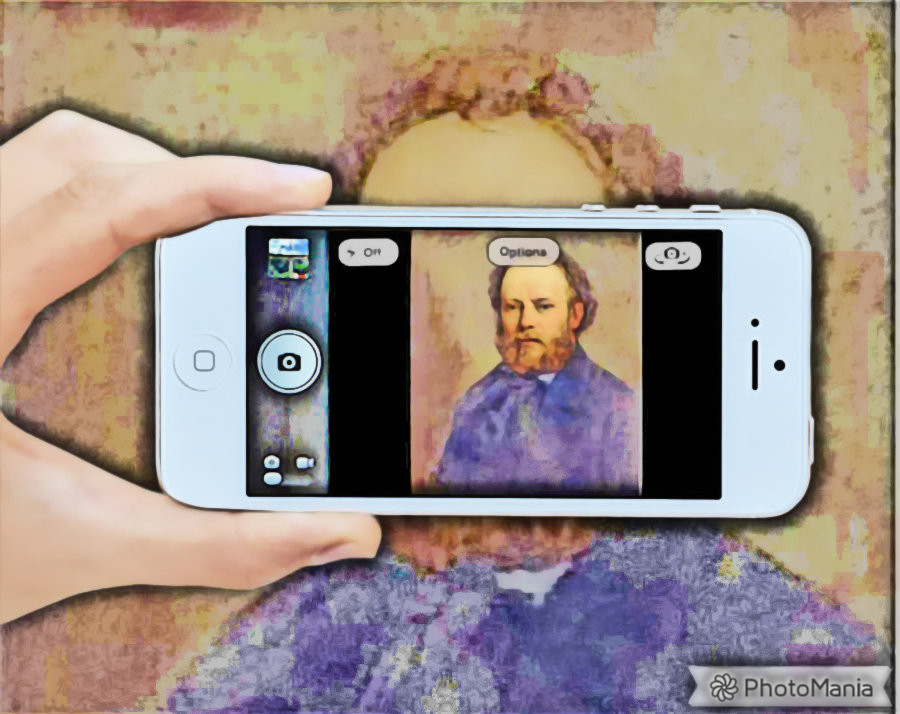
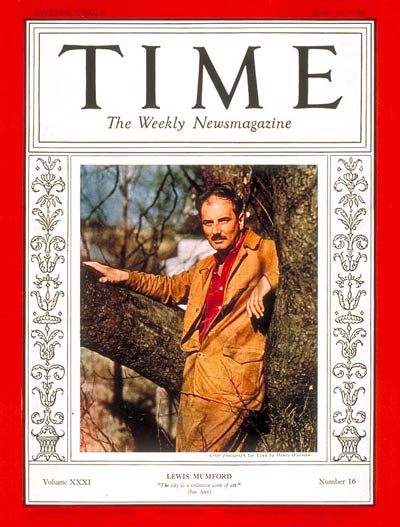
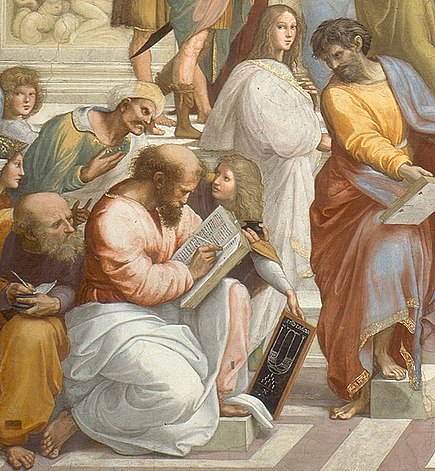
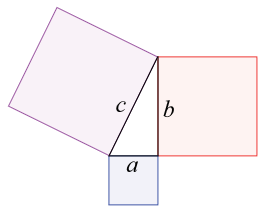 It is understood as more essential than the world and as prior to it. Mathematics becomes an outlier among representational systems because numbers are claimed to be “ideal forms necessarily prior to the material ‘instances’ and ‘examples’ that are supposed to illustrate them and provide their content” (Rotman 2000, 147).
It is understood as more essential than the world and as prior to it. Mathematics becomes an outlier among representational systems because numbers are claimed to be “ideal forms necessarily prior to the material ‘instances’ and ‘examples’ that are supposed to illustrate them and provide their content” (Rotman 2000, 147).
